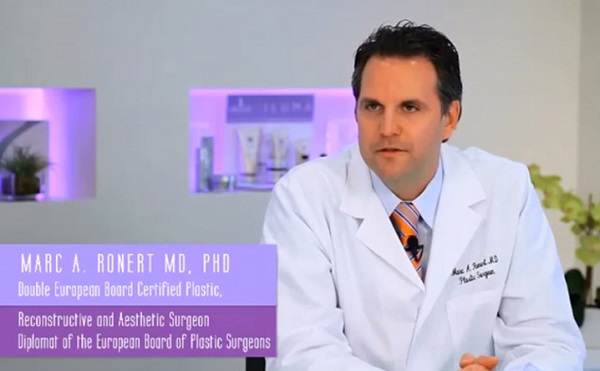Combat age spots, pigmentation and uneven skin tones.
When we talk about ageing with our clients, we often hear stories of fine lines and wrinkles, under-eye bags and sagging skin. But one of the first things to give away our advancing years long before clients come to us with their ageing concerns is actually pigmentation, or hyperpigmentation to be more accurate. Also known as age spots, freckles or melasma, they are those brown spots we all prefer weren’t there. Little reminders of youthful recklessness, a time when getting a tan took priority over preserving our skin.
“As you age, photo damage from the sun and environmental toxins can create dark spots and uneven pigmentation on the skin, along with fine wrinkles and rough skin texture. Even skin tone is a universal sign of youth and beauty,” explains skincare expert, Dr. Marc Ronert.
It’s not surprising then, that as our clients hit their later 30s, 40s and 50s, they’re often desperate for a solution to this problem – a smoothing out of uneven skin tone, reduction of redness and spots, and a return to a more youthful overall radiance.
Whilst there are a range of medical and surgical anti-ageing treatments available, they do not come without their share of risk. For clients who don’t want to venture down this more expensive and invasive path, there are a range of topical products aimed at minimising uneven discoloured skin tone. Unfortunately, knowing which product to use for each specific concern can often be overwhelming. So here are some next-generation lighteners and brighteners being used in skincare today…
- Illumiscin™ is a blend of Vitamin C, Zinc PCA, and Oleropein. A form of olive leaf extract, it is aimed at inhibiting tyrosinase and preventing the development of Melanin and Lipofuscin, the creators of dark spots in the skin.
- DermaPep™ , or Dipeptide, is another product aimed at inhibiting tyronsinase and includes a whitening agent. Studies suggest it possesses far greater depigmenting effects than other known whitening agents such as arbutin as well as offering anti-inflammatory benefits.
- Melaslow™ is extracted from a Japanese Mandarin Citris reticulata Blanco – Unshiu. , studies suggest it may be a significant inhibitor of melanogenesis and tyrosinase activity.
In a recent study, participants applied a cream containing 5% Melaslow™ twice daily to one hand for 6 weeks to test the effectiveness on age spots and brightening effects respectively. At the end of the hand cream study, there was a 28% decrease in colour intensity of age spots and participants noticed a 71% decrease in overall intensity of age spots.
Some other next-generation products to look out for include:
- Tyrostat (Rumex), a plant derived botanical from the Field Dock, native to Northern Canada, its also aimed at inhibiting tyrosinase and may have a higher activity than arbutin, turmeric and hydroquinone at reducing skin pigmentation, age spots and erythema.
- Sulphora White, a liposomal preparation of Swiss garden cress sprouts rich in sulforaphane, containing whitening antioxidant phytonutrient. It is designed to inhibit pigmentation by targeting the two upstream key reaction steps in the melanin cascade, so it may help to neutralise reactive oxygen species and inhibit binding of á-MSH, a natural hormone which stimulates skin pigmentation.
- Bellis Perennis (Daisy Flower) is a specific species of European daisy native to western, central and northern Europe thought to influence different pathways involved in melanin formation, counteracting age spots and balancing hyperpigmentation.
- Indian Kudzu (Pureraria tuberosa leaf cell extract) is targeted at limiting melanogenisis and may help decrease tyrosine (a culprit of melanin production) by up to 24%.
- Synovea HR (Hexylreorcinol) has been shown to be four-times more effective in clinical studies than Hydroquinone in lightening skin. Studies showed a 75% reduction in extracellular melanin.
- Revinage ™ contains an extract of the Hairy Beggartricks (Bidens Pilosa) plant. Studies showed a reduction in age spots by 36%. It was also shown to be 3 times more effective than Kojic acid and arbutin. Other benefits of this ingredient include potential anti-inflammatory and retinoid-like benefits without inflammatory side effects.
- Trichloma Matsutake Singer Enzyme Mushroom Extract or pine mushroom, is a skin lightening agent native to Japan.
Other ingredients to look for include Neem leaf, which has been suggested to improve clarity, brightness and reduce melanin production. Green Tea extract may also help at reducing redness and soothing the skin, while Mulberry extract, Liquorice, Bearberry, Net-DG (glycyrrhizate) and Emblica are known for their potential natural skin lightening benefits.
A little research and the right brightening skincare ingredients in the correct percentages can make all the difference to your clients’ skin. And while you’re improving their skin tone and texture with targeted products, ensure you remind your clients that sun exposure is the number one cause of accelerated ageing, so limited exposure and sunscreen are key to improving longevity of their results.
For more information visit http://www.image-skincare.com.au/pages/contact-information


